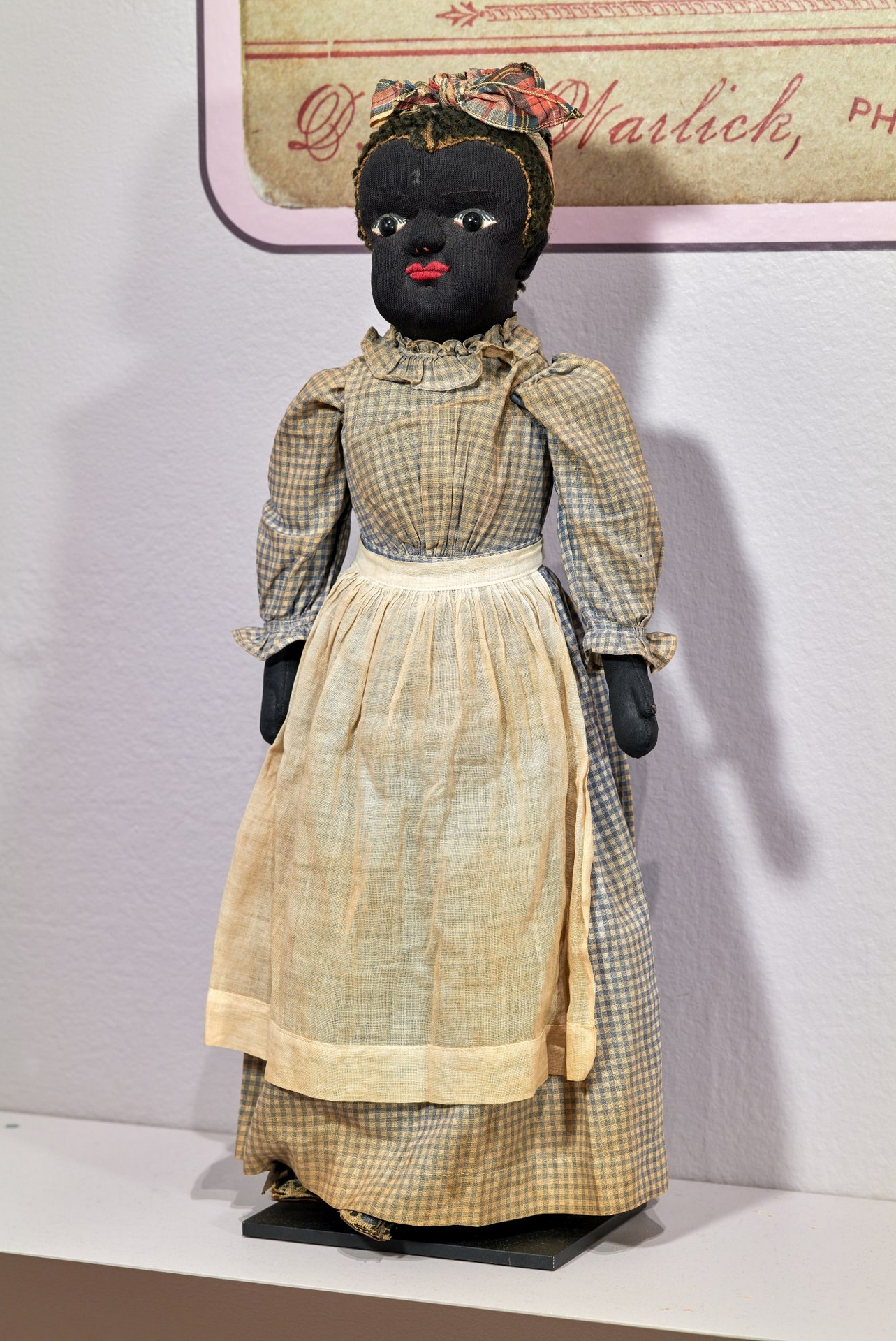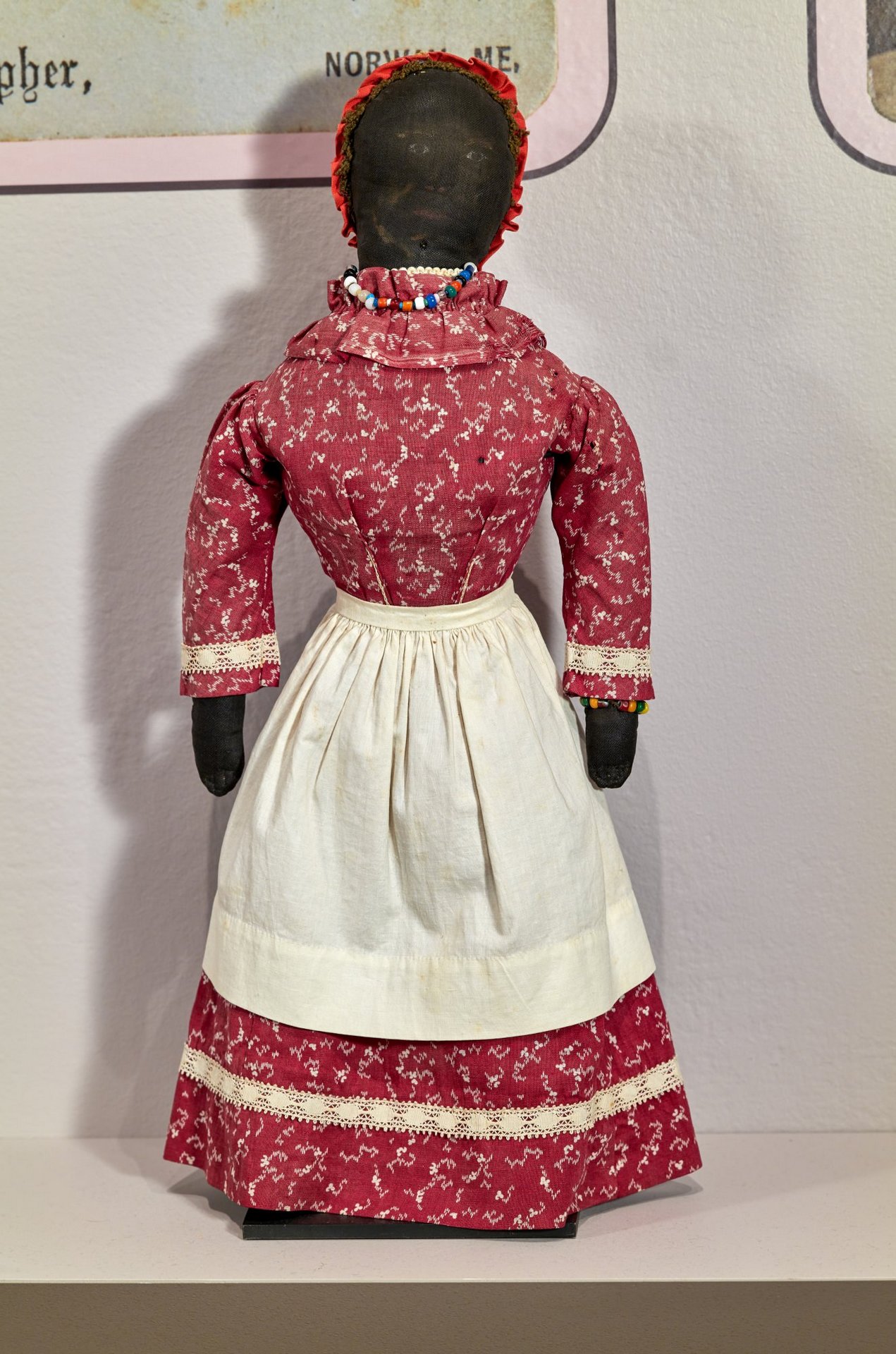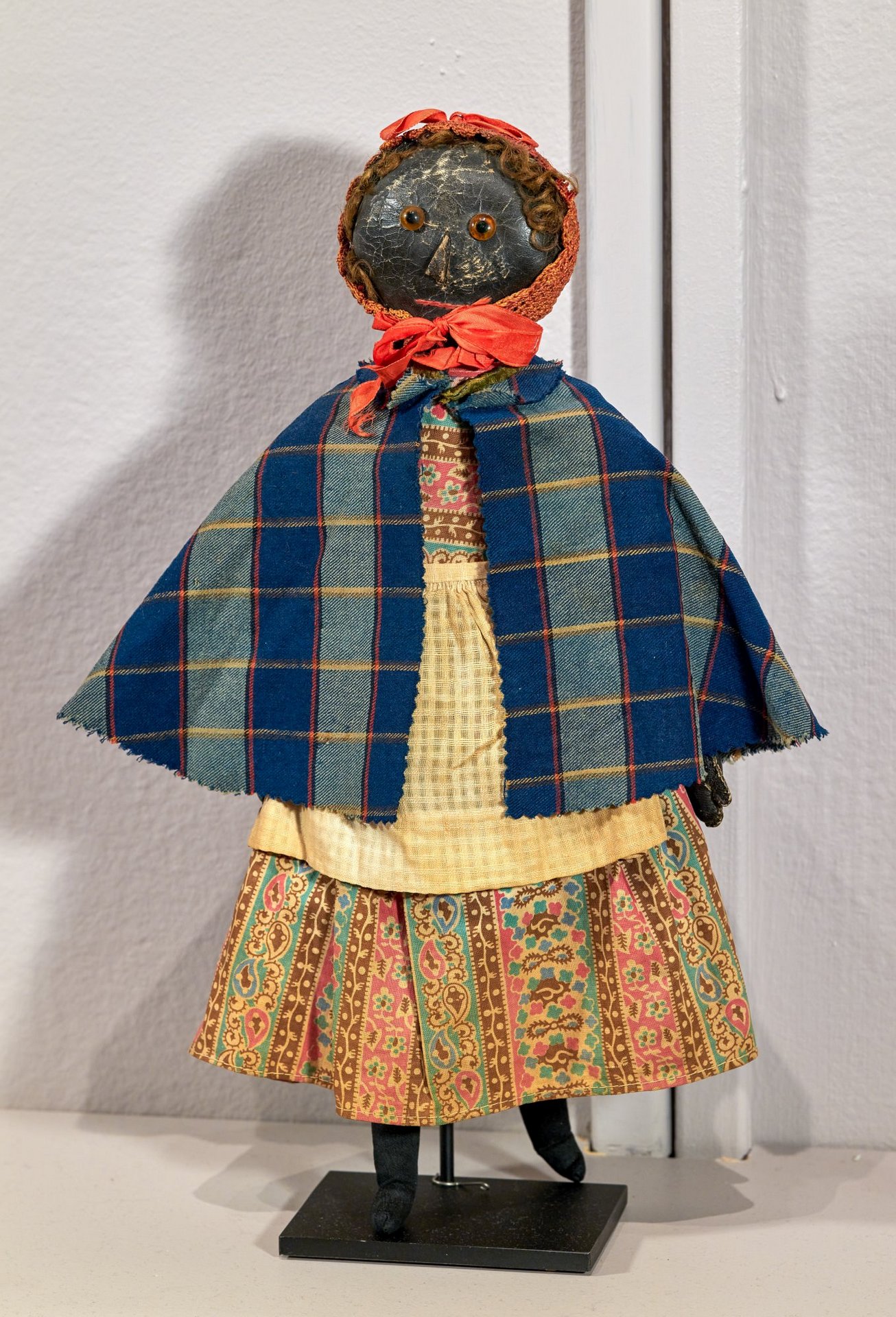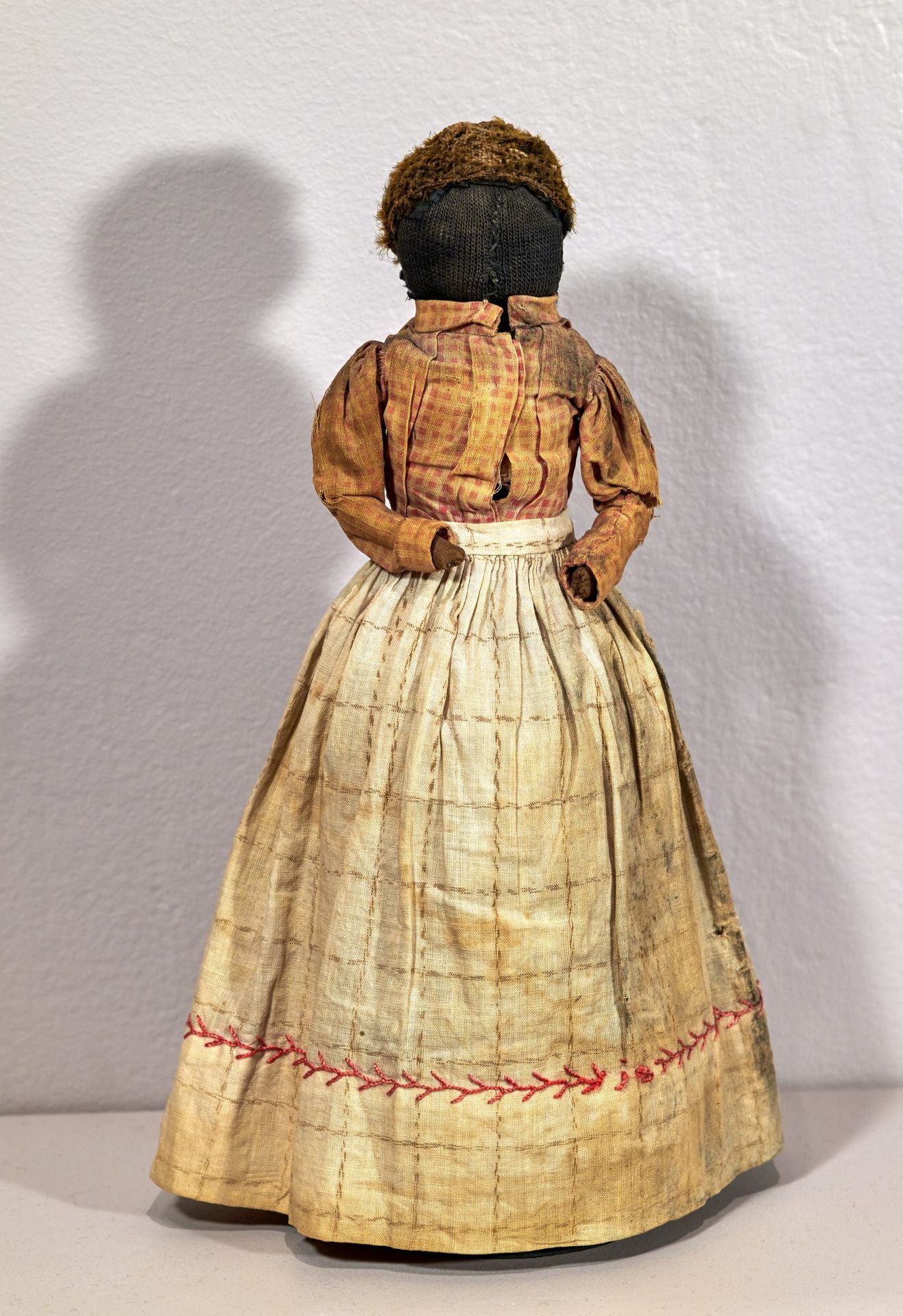




The
derogatory stereotype of the Mammy depicts Black women as matronly, cheerfully
subservient domestic workers. Practical accessories like the apron and
headscarf, which helped keep clothes clean and kept hair off the face, defined
the caricature and cemented the notion that Black women existed to serve.
The
stereotype of Mammy (also called Dinah) is rooted in nostalgia for the days of
slavery, when the comfort of white home life was made possible at the expense
of the domestic labor of enslaved Black women.
This sentiment supported the fiction that Black women’s labor was done out of
affection and loyalty, not force.
Black
women faced limited opportunities after emancipation, and domestic service
remained one of the few options for employment. As the Mammy stereotype
solidified in popular culture, Black women fought to define their personhood,
womanhood, and status as American citizens.
Eastman
Johnson (1824-1906)
Dinah, Portrait of a Negress, 1867
Oil
on board
Gibbes
Museum of Art, Gift of Kathleen Hemmer and Arthur Seelbinder
In
contrast to the widespread derogatory caricatures of Dinah figures, this
painting depicts a Black woman in a quiet moment of dignity. Eastman Johnson,
while born and raised in the North, took a special interest in painting
everyday individuals in the South, both before and after slavery.
Unidentified photographer,
Gelatin silver print, US,
ca. 1880-1925
Tea Service
This
photograph presents a child having a doll tea party, with white dolls seated at
the table and the Black doll standing, seemingly in service, in the background.
Children often played with their dolls in ways that reflected the racial roles
they observed in the world around them. Publications for children, like American Girl’s Book (1831),encouraged this kind of play. It
included instructions for making a family of white dolls and recommended that
“a black one may then be added as a servant.”
Doll
with orange apron, US, ca. 1900
Mixed
fabrics, glass, leather
[Patent 1]
F.B. Hatch
USPTO Patent 55040, May 4, 1920
[Patent 2]
E.Z. Team
USPTO Patent 46188, July 28, 1914
[Patent 3]
V.M. Kieffer
USPTO Patent 63467, December 11, 1923
As
the commercial caricature of Mammy grew in popularity, so did its potential to
sell products, including dolls. Multiple inventors patented Mammy dolls,
profiting from the stereotype.
William
Lightfoot Visscher (1842-1924)
Black Mammy: A Song of the Sunny
South and Other Poems.
Cheyenne, WY, 1886
Patricia
D. Klingenstein Library, New-York Historical Society
Stereotypical
depictions of African American women as Mammy figures soared in popularity
after Reconstruction. At a time of great upheaval, many Americans hungered for
an idealized past. Poet and journalist William Visscher used such depictions in Black Mammy, which features a
caricatured image on the cover. The title poem is written in Black dialect, a
demeaning exaggeration of African American Vernacular English.
For
centuries, Black women chose to wrap their hair to protect it. Some also used
bold fabrics and elaborate wrapping techniques for self-expression. The
indelible image of the kerchiefed Mammy caricatured this practice, reducing
generations of tradition to a marker of subservience.
The
stereotype emerged during slavery and crystalized after emancipation. Perhaps
America’s most familiar Dinah figure is Aunt Jemima, a character launched at
Chicago’s World's Columbian Exposition in 1893 to sell pancake mix. Nancy
Green, a formerly enslaved domestic worker, acted the part. As Aunt Jemima’s
popularity soared, some doll makers resisted the stereotype by creating highly
individualized Black dolls.

Doll
with kerchief and apron, US, ca. 1900
Mixed
fabrics, paper, mohair, paint

Doll
in pink dress with apron, US, ca. late 19th/early 20th centuries
Mixed
fabrics, leather

Doll
with red cap, US, late 19th century
Mixed
fabrics, mother of pearl, beads

Doll
with leather head and bandana, US, ca. 1900
Mixed
fabrics, leather

Doll
with red kerchief and apron,
US, late 19th/early 20th centuries
Mixed
fabrics, leather, mohair, human hair,
mother of pearl

Doll
with pink blouse, US, ca. 1895
Mixed
fabrics, mohair, glass bottle
This
doll is constructed around a glass bottle from the Crasser Brand Brewing
Company, Toledo, Ohio.
Albert Sandoz, (1836-1897) Albumen silver print, Mobile, AL, ca. 1880-97
Photographs, Collection of Deborah Neff
Doll with kerchief and apron, possibly Mobile, AL, ca. 1880-97
Mixed fabrics, paint
While the identities of the children who played with the dolls in this exhibition have mostly been lost to history, these images taken by a Mobile, Alabama, photographer offer a rare opportunity to see a doll pictured with the child who owned it. Attired in an apron and kerchief, the Dinah doll has a distinctive painted face.
